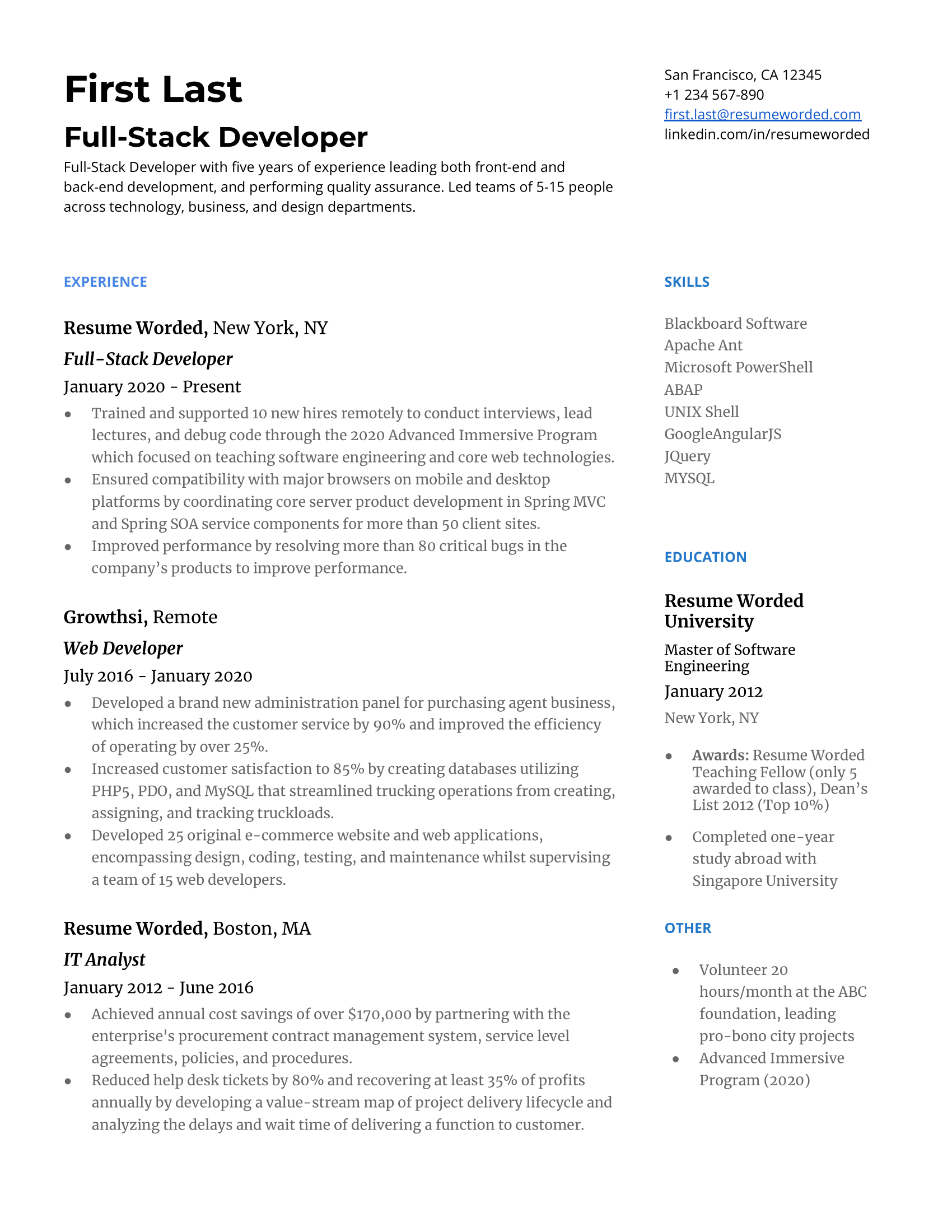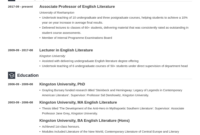Creating a compelling CV for a full stack developer role can feel like crafting a complex application itself, especially when you need to showcase both breadth and depth in your skills. It’s more than just listing technologies; it’s about telling a coherent story of your ability to tackle projects from front to back, from database design to user interface implementation. This document is your golden ticket, your initial pitch to potential employers, and it needs to reflect your versatility and problem-solving prowess clearly and concisely.
In today’s competitive tech landscape, merely having the skills isn’t enough; you also need to present them in a way that catches the eye of recruiters and hiring managers. A well-structured and impactful CV can make all the difference, ensuring your application doesn’t get lost in a sea of resumes. It’s an opportunity to highlight your unique blend of front-end and back-end expertise, demonstrating why you are the perfect candidate to build, maintain, and innovate across entire software stacks.
Crafting Your Full Stack Developer CV: Key Sections to Include
When you’re putting together your CV as a full stack developer, think of it as a blueprint of your professional journey and capabilities. Every section plays a crucial role in painting a complete picture of your expertise. You need to present yourself not just as someone who knows various languages, but as an architect who can envision and execute a project end-to-end. This involves careful selection of what to include and how to present it, ensuring clarity and impact are prioritized throughout the document.
The professional summary is your elevator pitch, typically a brief paragraph at the top of your CV that immediately tells the reader who you are, what you specialize in, and what unique value you bring. For a full stack developer, this should succinctly highlight your cross-functional abilities, perhaps mentioning a key achievement or a specific area of passion like scalable architecture or intuitive UI/UX. It’s your chance to grab attention from the outset and encourage them to read on.
Showcasing Your Diverse Skill Set
Your skills section is arguably the most critical part for a full stack role, as it directly addresses the technical requirements of the job. It’s not enough to list every technology you’ve ever touched; you need to categorize them logically to demonstrate your full stack proficiency. Think about separating your skills into distinct areas.

- Front-End Technologies: List languages like JavaScript, frameworks such as React, Angular, Vue.js, along with HTML5, CSS3, and related libraries (e.g., Bootstrap, SASS).
- Back-End Technologies: Include server-side languages like Node.js, Python, Java, Ruby, PHP, and frameworks (e.g., Express.js, Django, Spring Boot, Ruby on Rails).
- Databases: Specify both relational (e.g., PostgreSQL, MySQL, SQL Server) and NoSQL databases (e.g., MongoDB, Redis, Cassandra) you have experience with.
- Tools & Platforms: Mention version control (Git, GitHub, GitLab), cloud platforms (AWS, Azure, Google Cloud), containerization (Docker, Kubernetes), CI/CD tools, and project management software.
- Soft Skills: Don’t forget to include essential soft skills like problem-solving, teamwork, communication, and agile methodologies, which are crucial for full stack collaboration.
Your work experience section should go beyond mere job descriptions. For each role, especially those where you functioned as a full stack developer, describe your responsibilities using action verbs and quantify your achievements whenever possible. Instead of saying “worked on a web application,” try “developed and deployed a scalable e-commerce platform that increased conversion rates by 15% using React, Node.js, and MongoDB.” Highlight instances where you contributed to both front-end and back-end aspects, showcasing your ability to navigate the entire development lifecycle. If you have significant personal projects or open-source contributions, a dedicated “Projects” section can be invaluable for demonstrating your practical application of full stack knowledge.
Tips for Making Your Full Stack CV Shine
Once you’ve structured your full stack developer CV template, the next step is to refine and optimize it to ensure it truly stands out. It’s not just about what you include, but how you present it. One of the most important pieces of advice is to tailor your CV for each job application. Read the job description carefully and customize your summary, skills, and experience sections to directly address the requirements and keywords mentioned. This shows the employer you’ve done your homework and are genuinely interested in that specific role, rather than sending a generic resume.
Always use strong action verbs to describe your accomplishments. Words like “developed,” “implemented,” “designed,” “optimized,” “architected,” and “deployed” convey impact and capability. For instance, instead of “responsible for database management,” consider “architected and optimized PostgreSQL database schemas, reducing query times by 20%.” Quantifiable results are incredibly powerful; they provide concrete evidence of your contributions and the value you can bring to a new team. Metrics like percentage increases, specific numbers of users served, or reductions in errors speak volumes.
Focus on readability and a clean layout. Recruiters often spend only a few seconds scanning a CV initially, so it needs to be easy on the eyes and quickly convey key information. Use clear headings, bullet points, and consistent formatting. Avoid overly complex designs or too much jargon that might not be understood by initial screeners. Furthermore, consider the Applicant Tracking Systems (ATS) that many companies use. Ensure your CV is ATS-friendly by using standard fonts, avoiding excessive graphics, and incorporating relevant keywords from the job description naturally throughout your content.
Finally, proofread your CV meticulously. Even minor typos or grammatical errors can detract from your professional image. Have a friend or colleague review it for clarity and accuracy. If you have an online portfolio, GitHub profile, or live project demos, make sure to include links in your contact information section. These provide tangible evidence of your full stack skills and allow potential employers to see your code and projects in action, significantly strengthening your application and showcasing your practical abilities beyond what a static document can convey.
By applying these strategies, you can transform your full stack developer CV template into a powerful tool that effectively communicates your unique value. It’s about more than just a list of credentials; it’s your personal narrative of technical prowess and problem-solving capabilities. With a thoughtfully crafted document, you’ll be well on your way to securing interviews for your desired roles in the dynamic world of full stack development.
